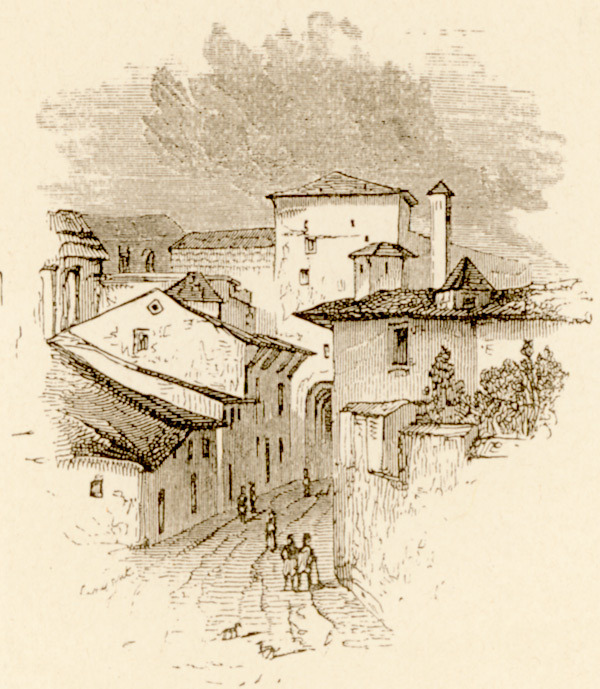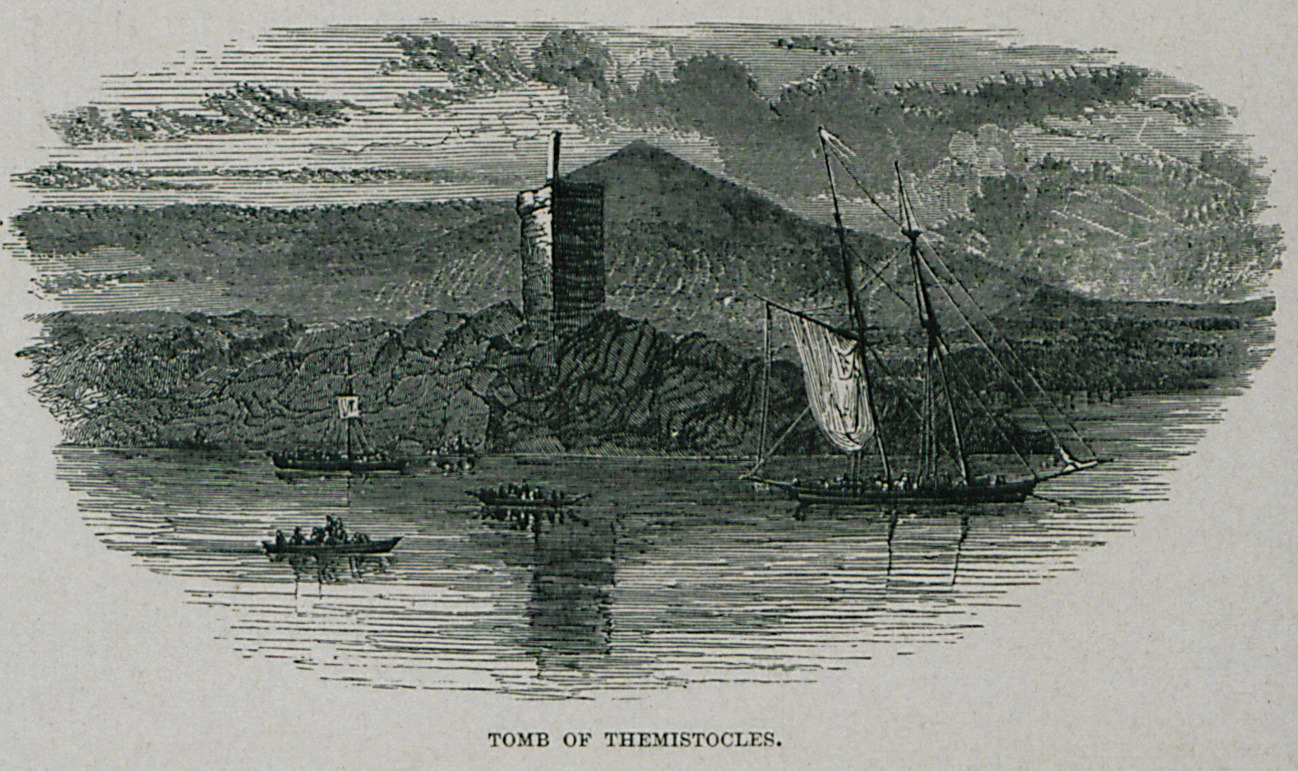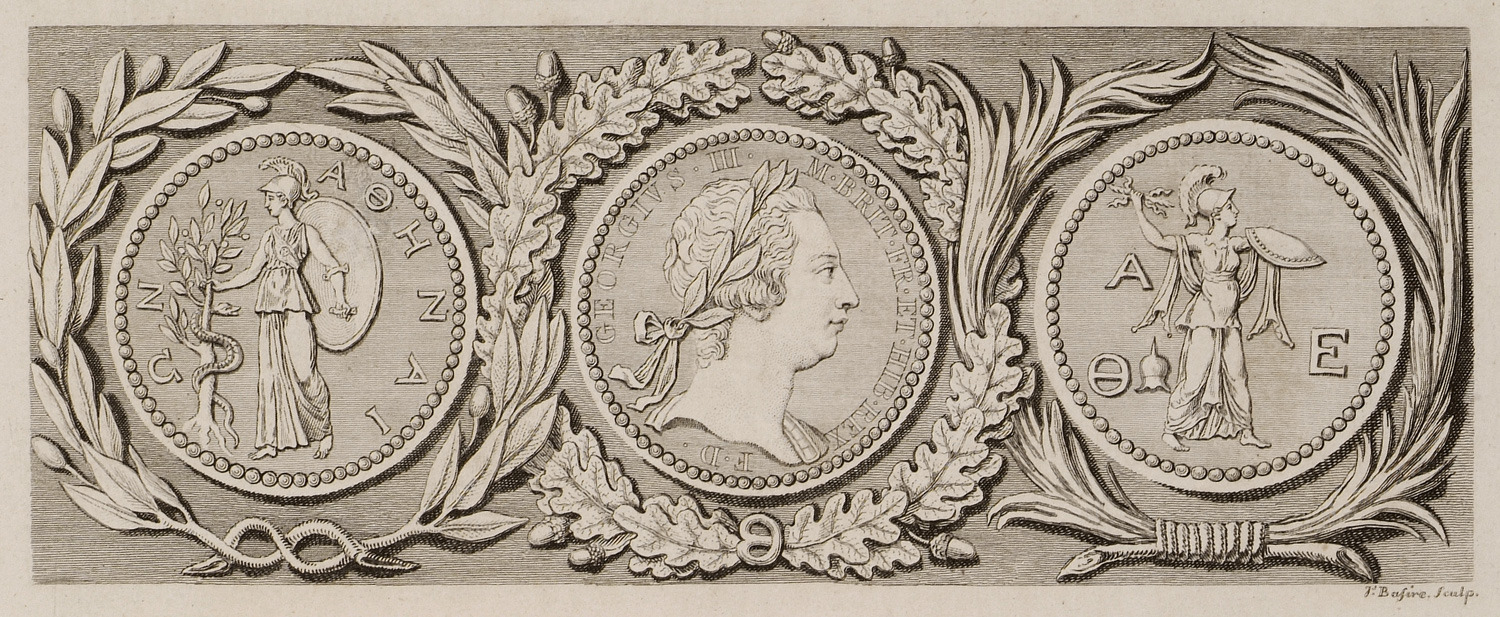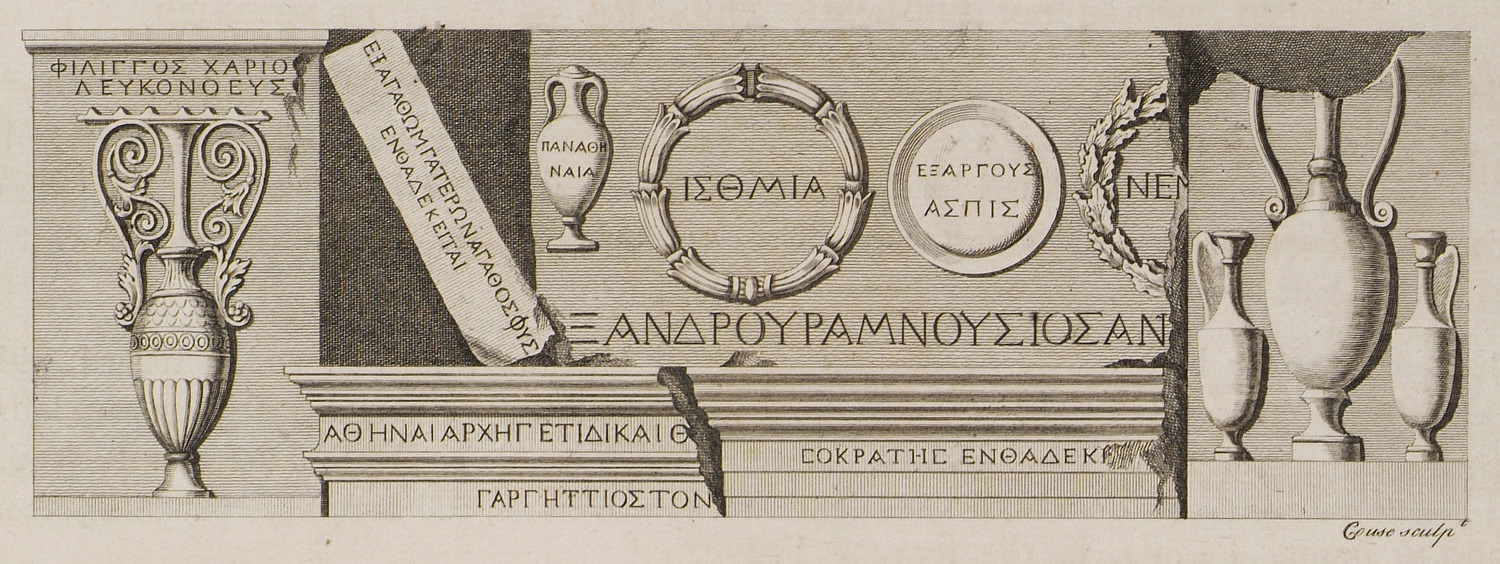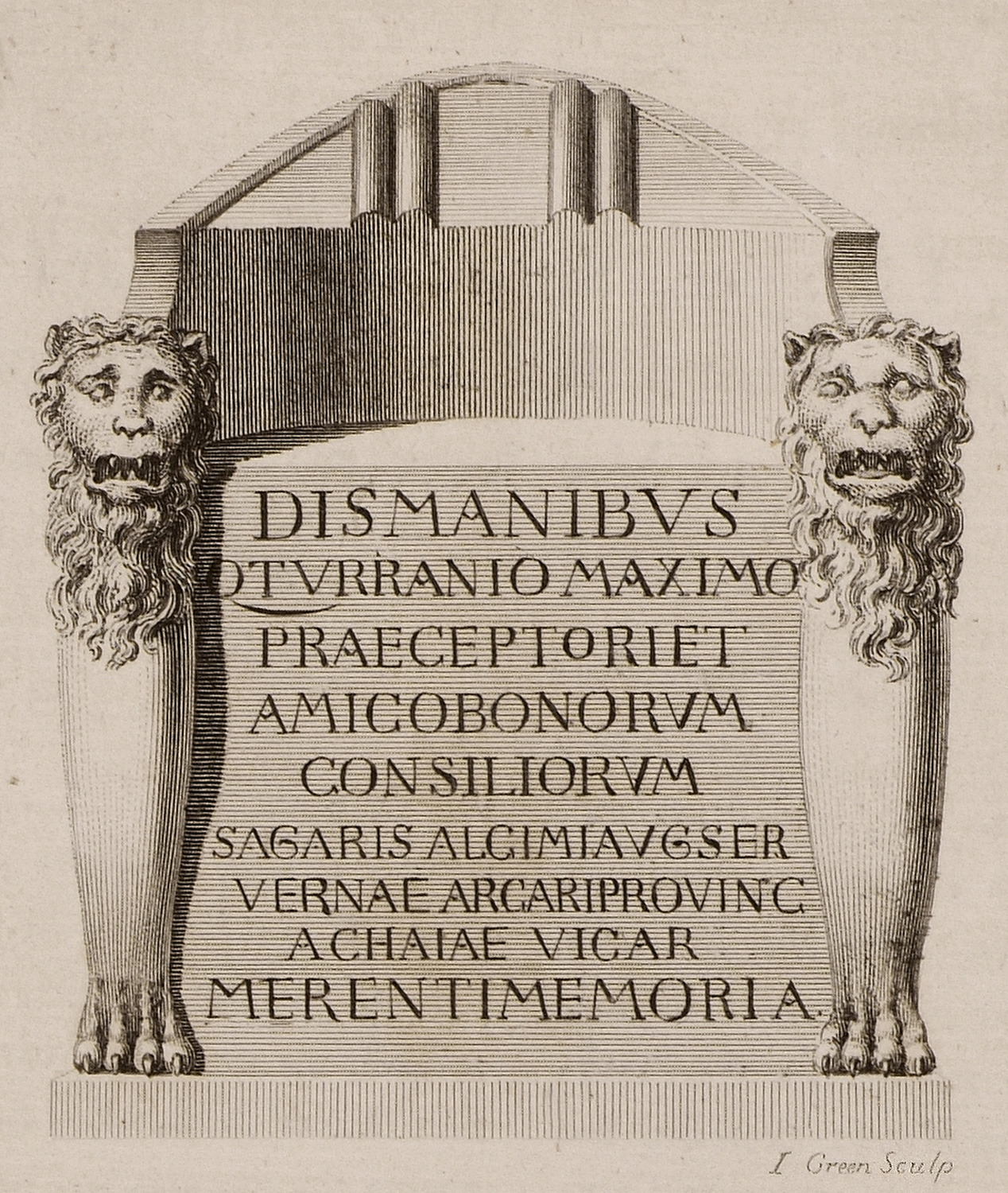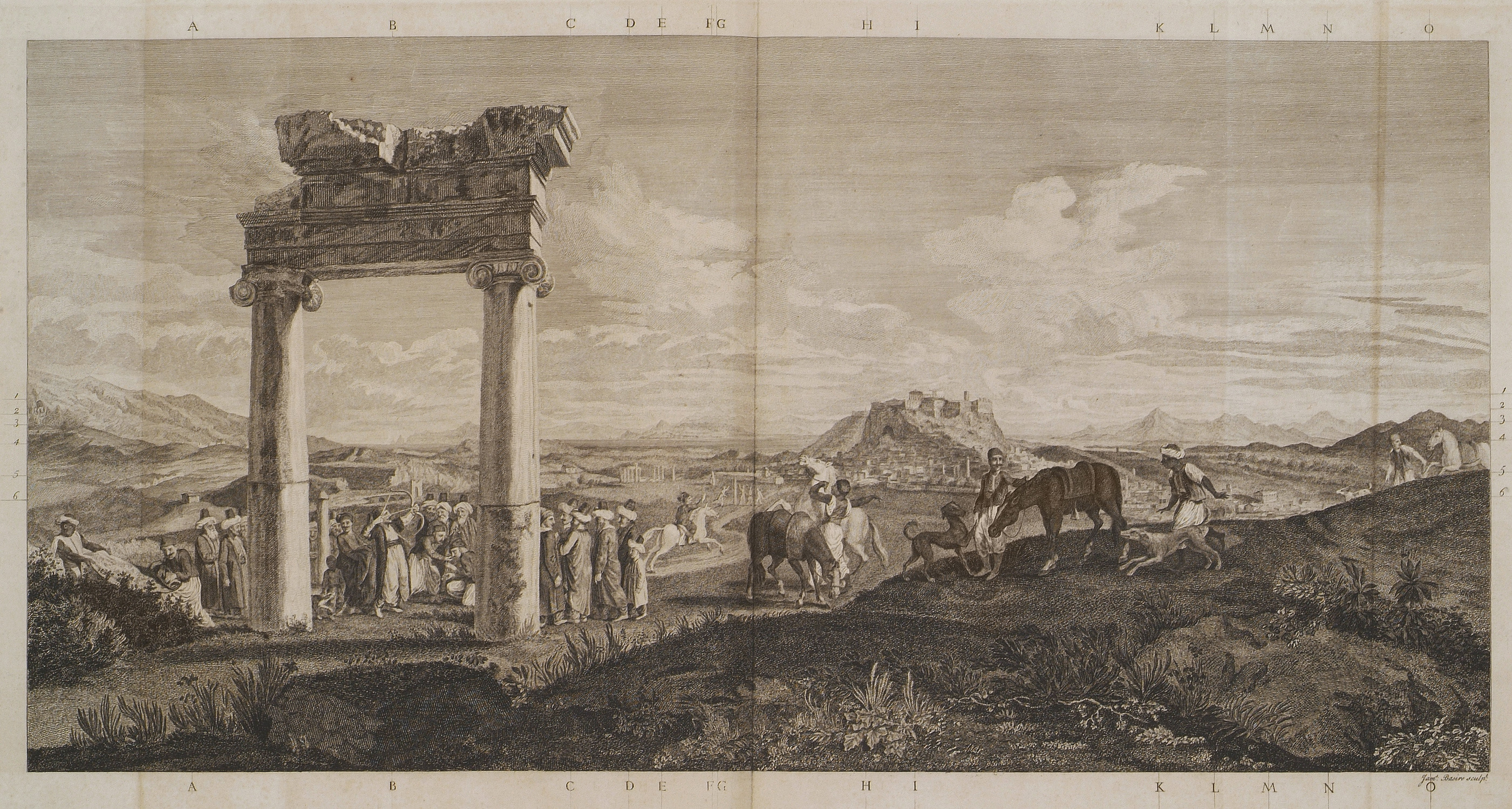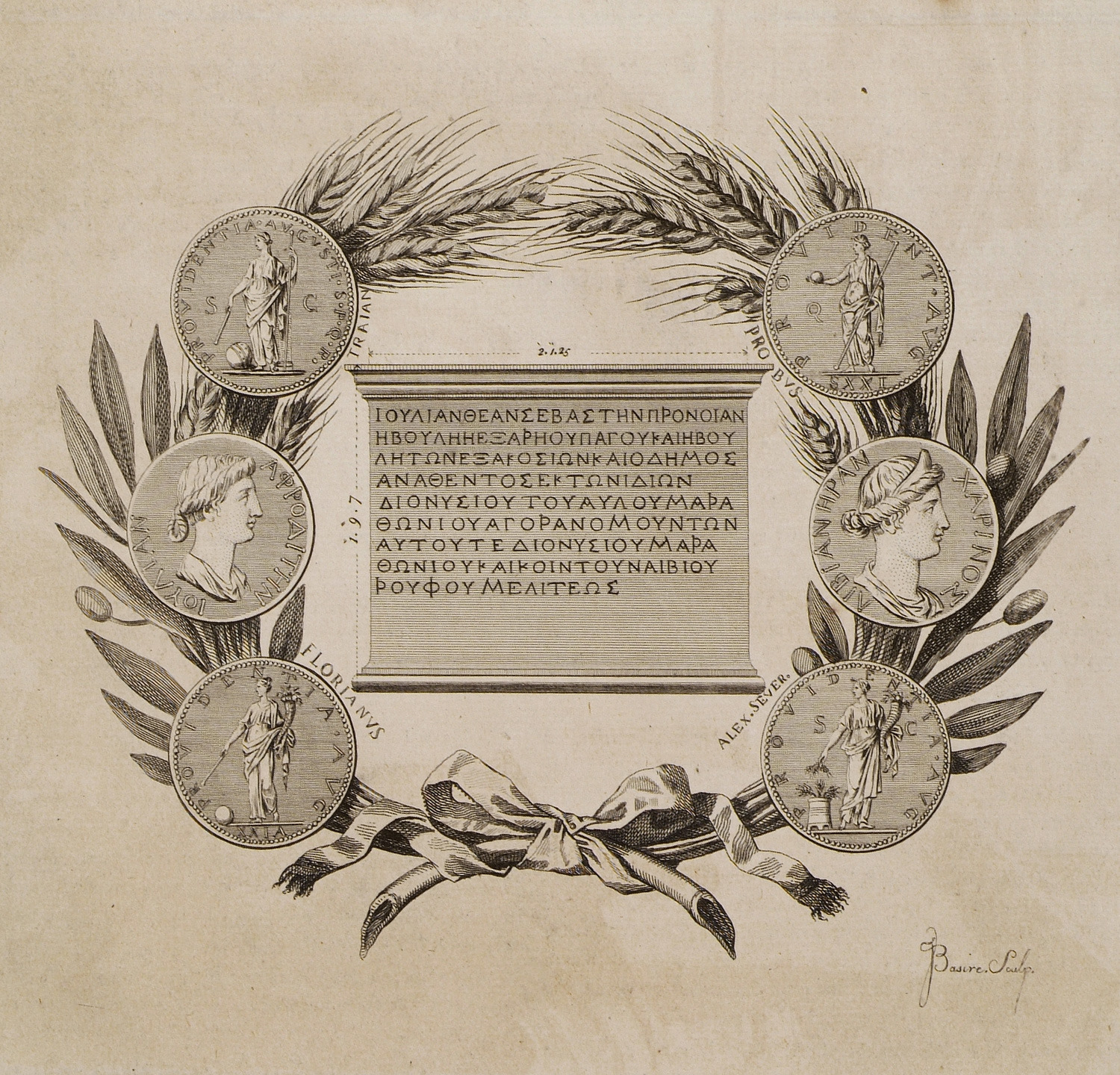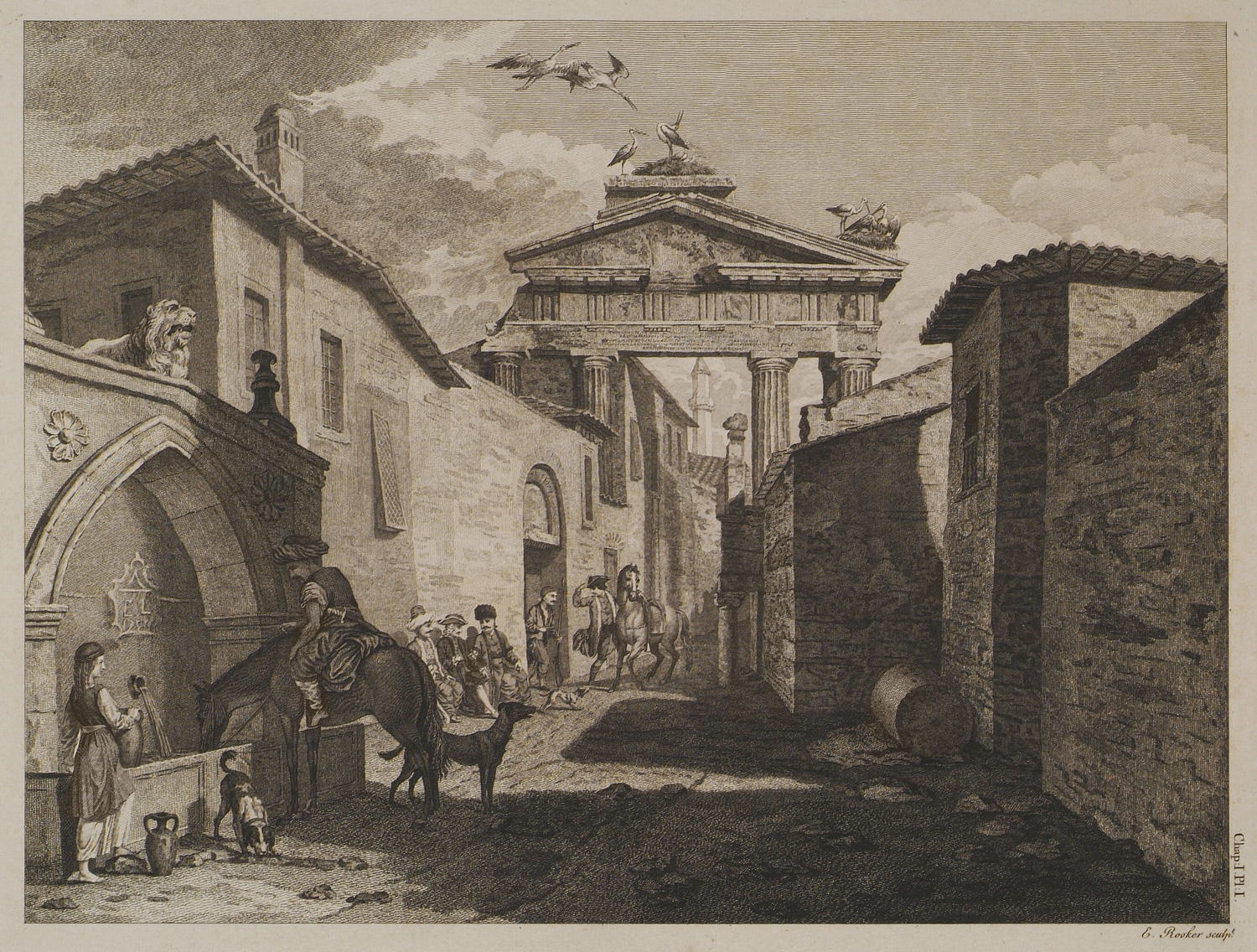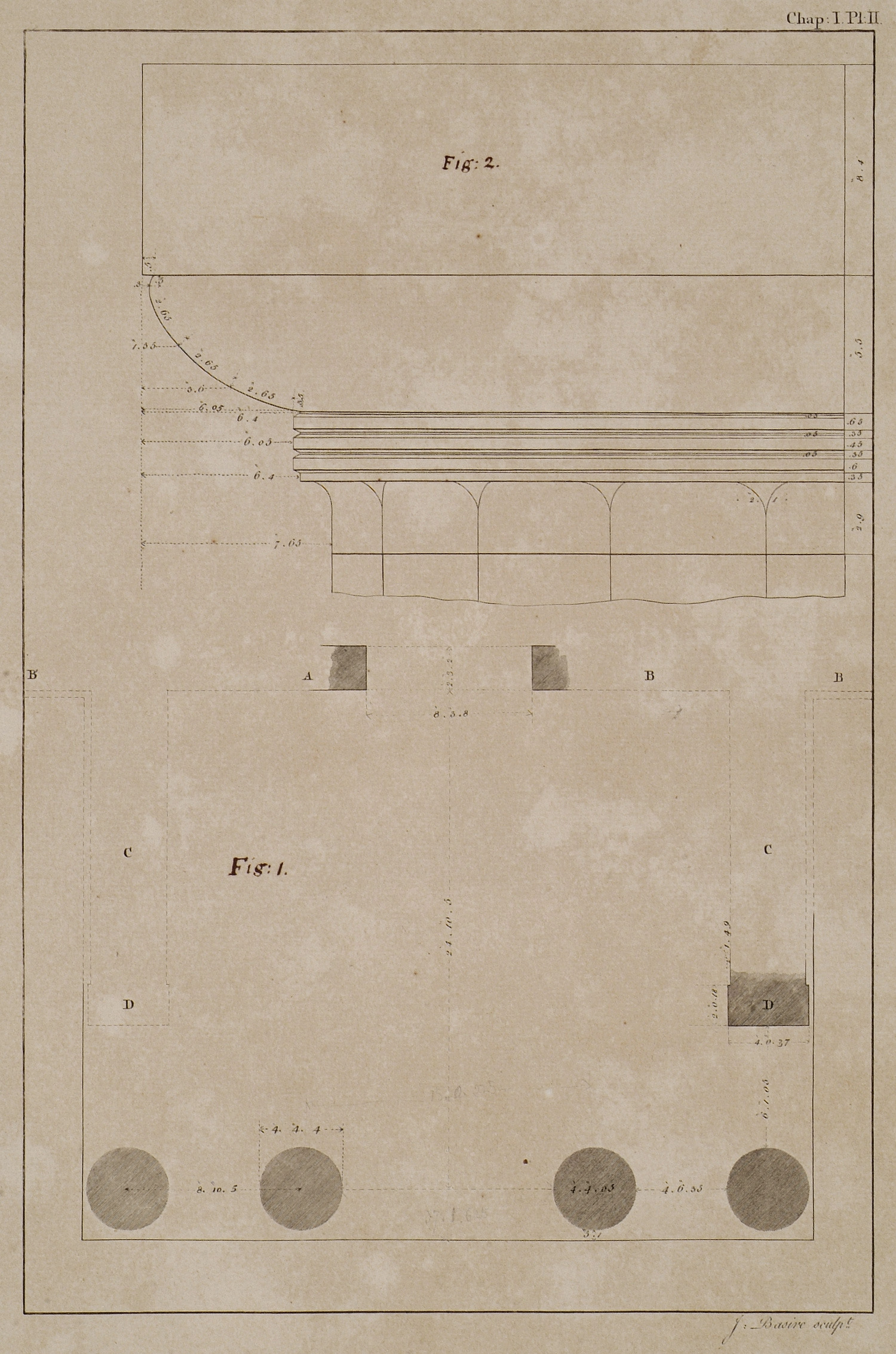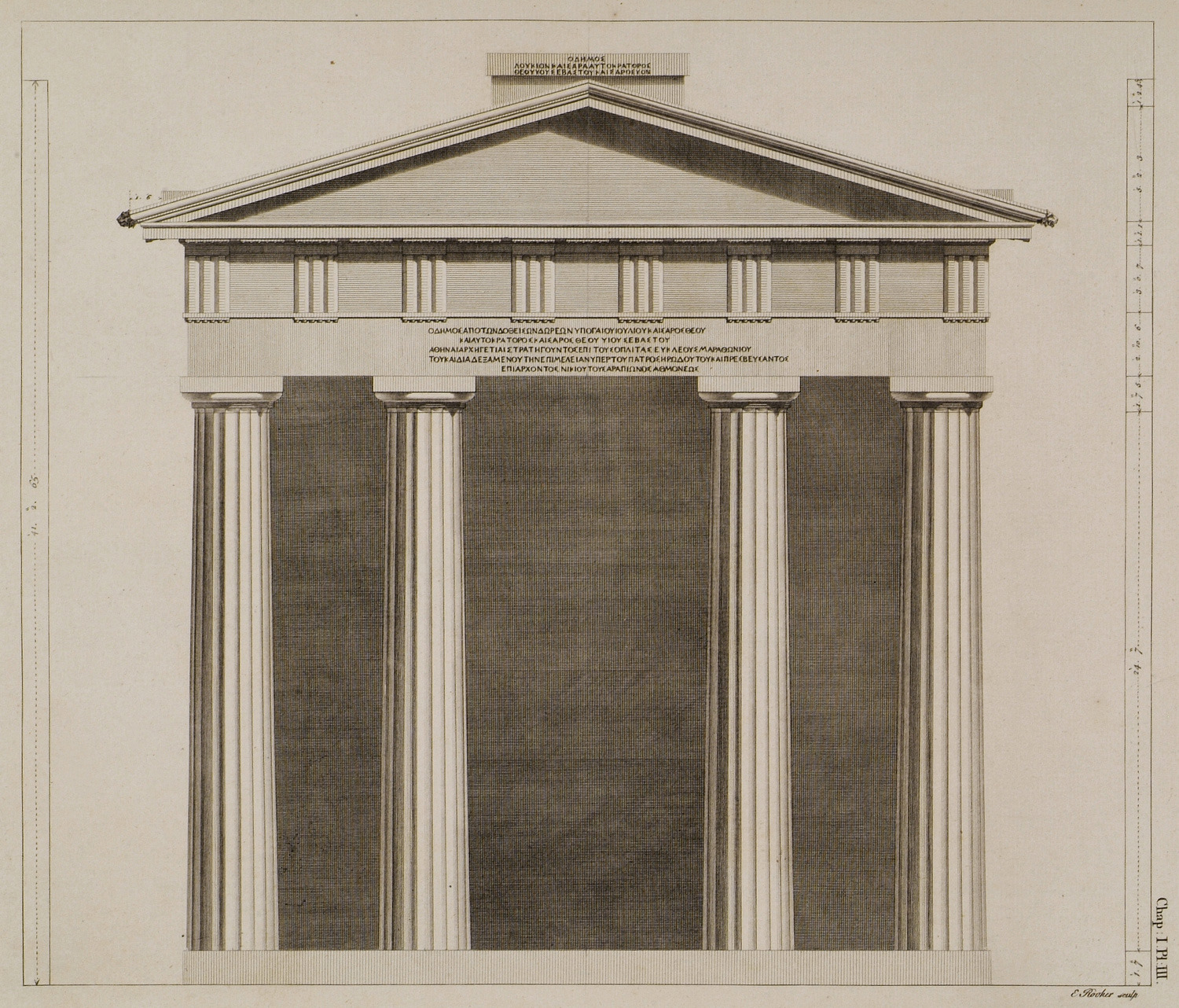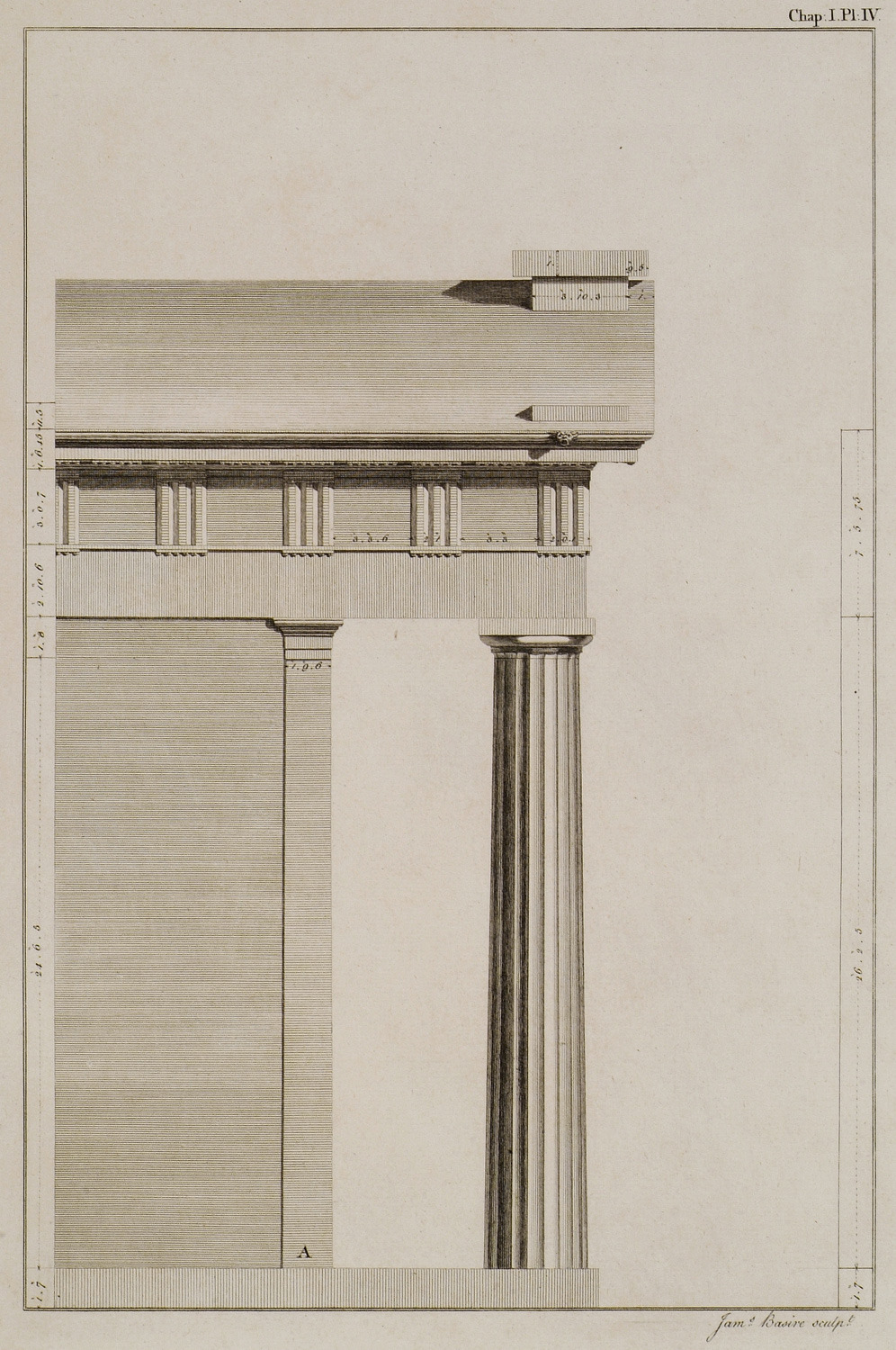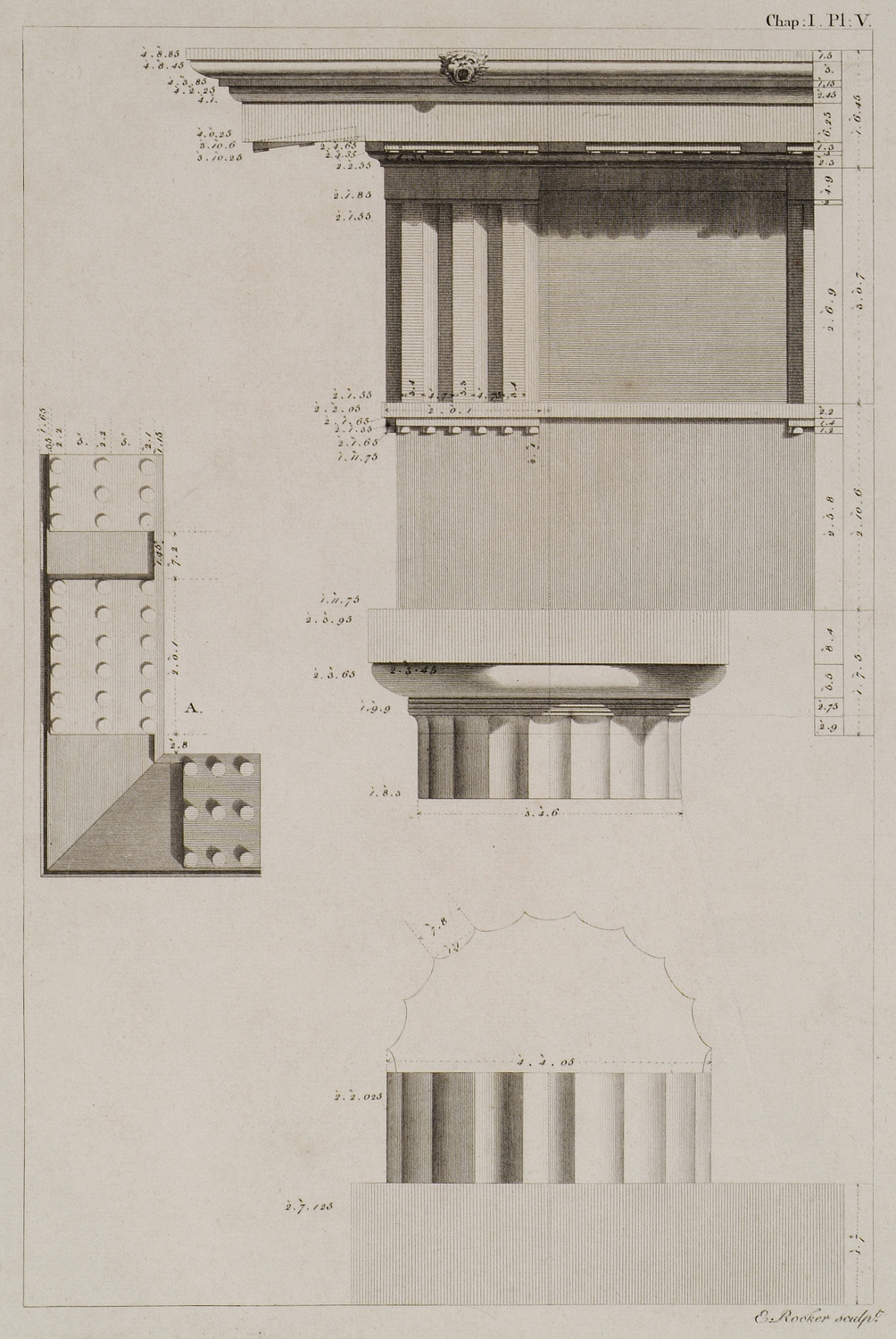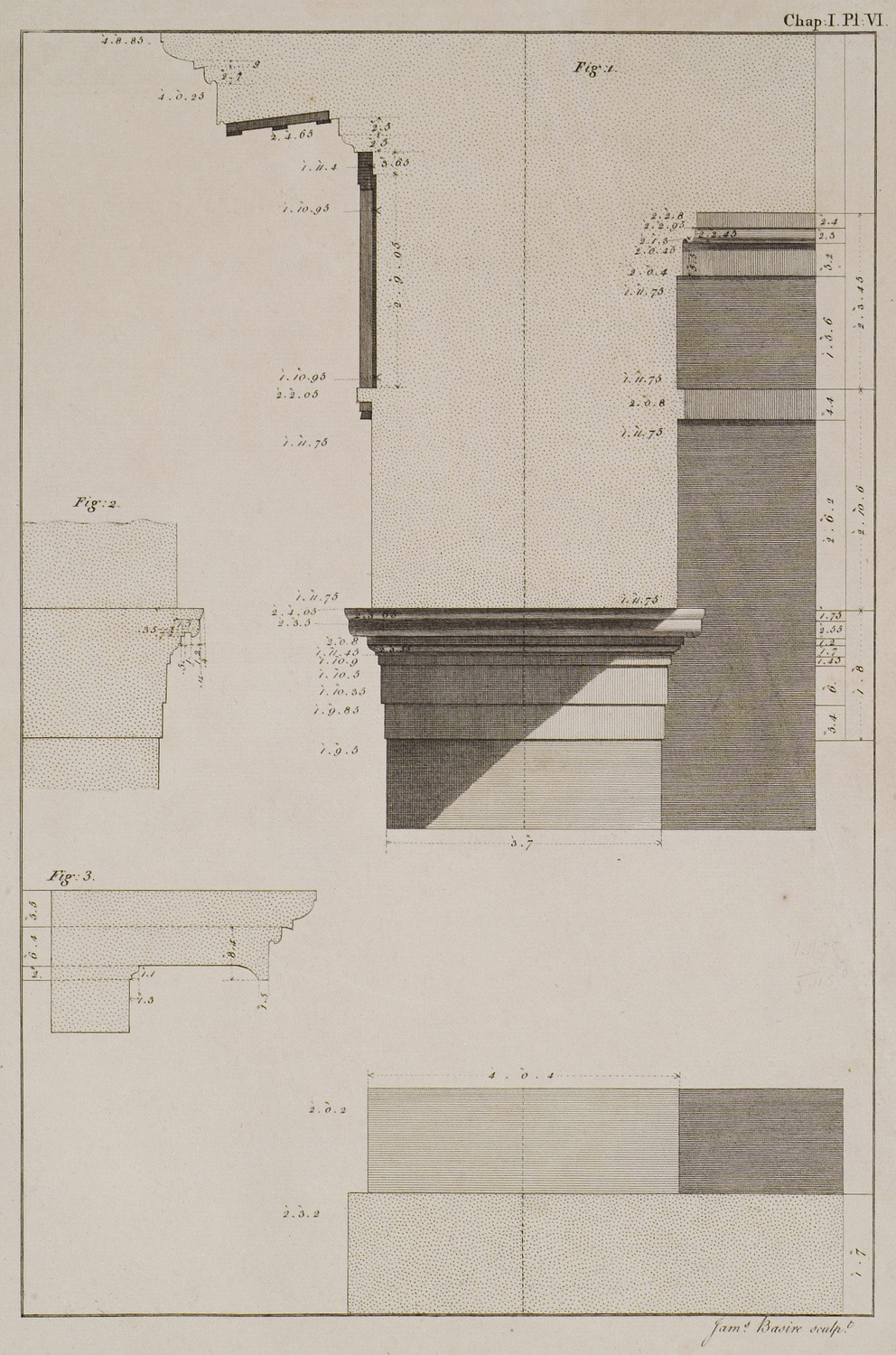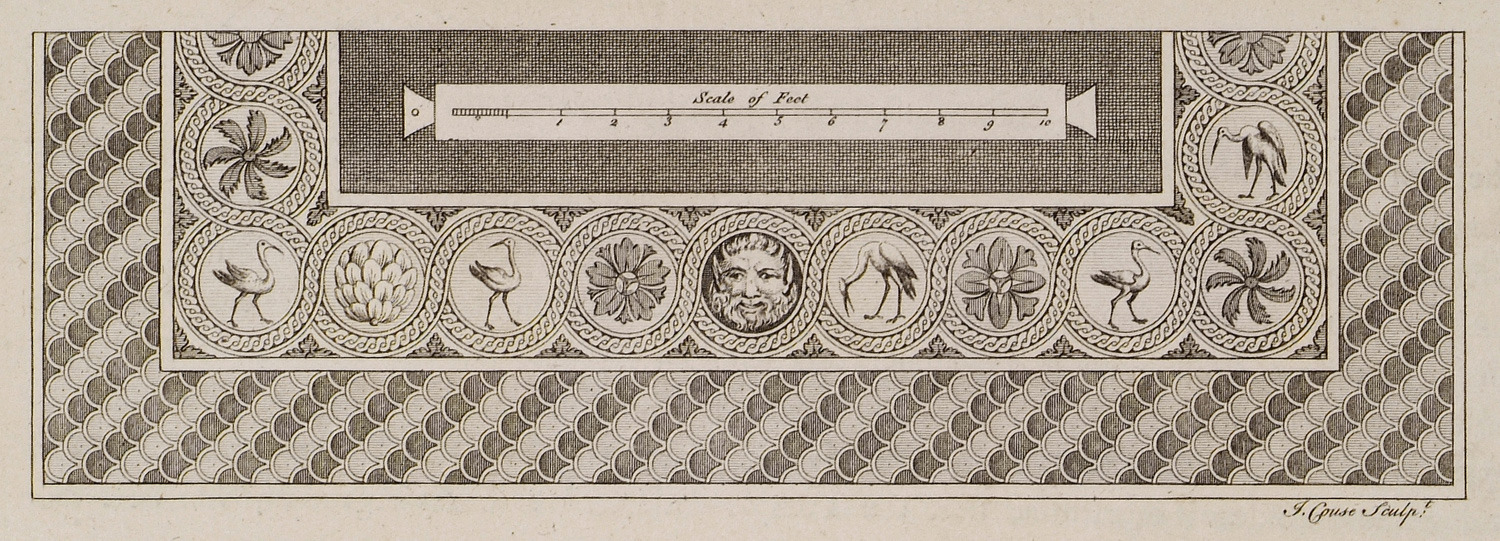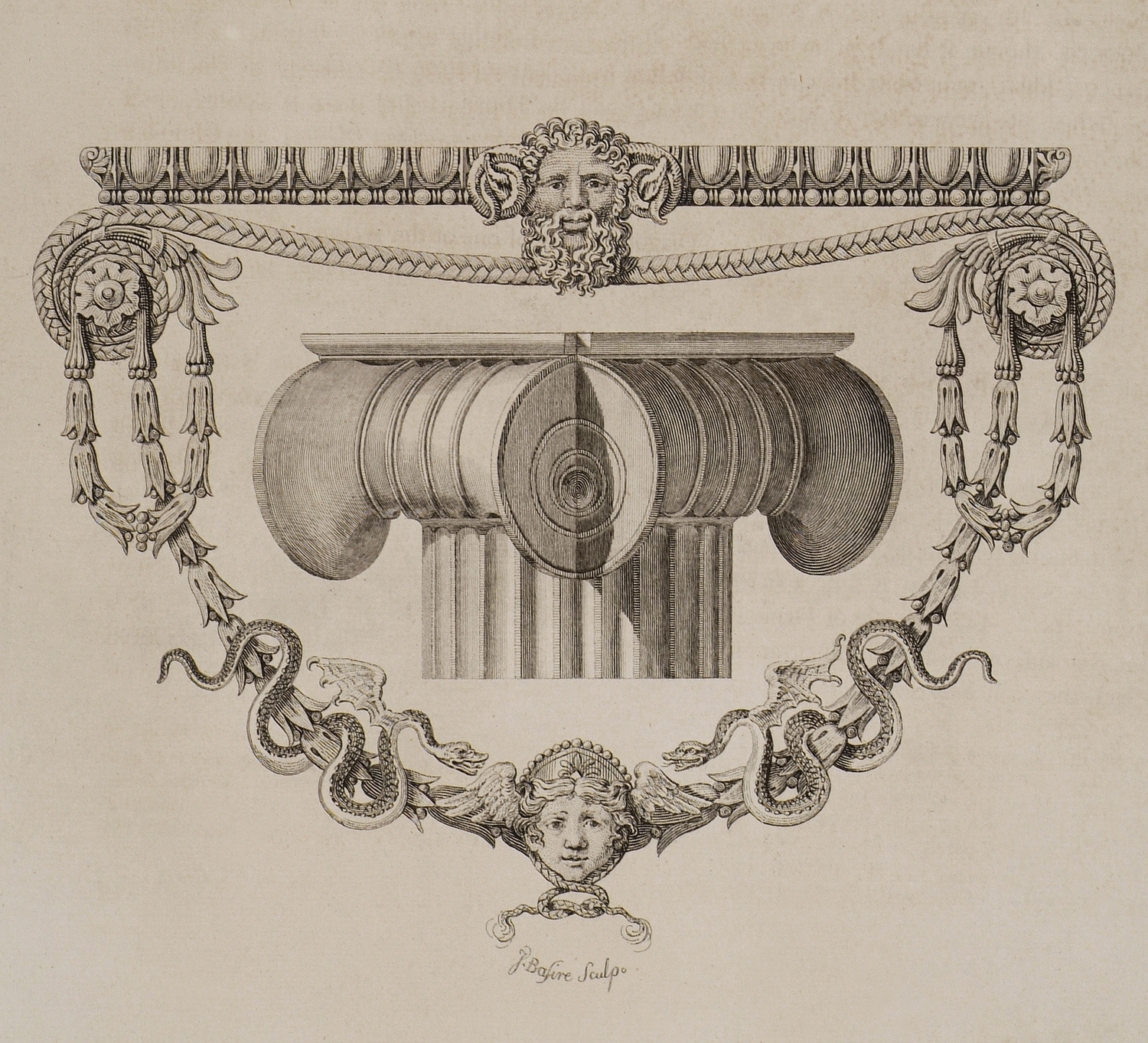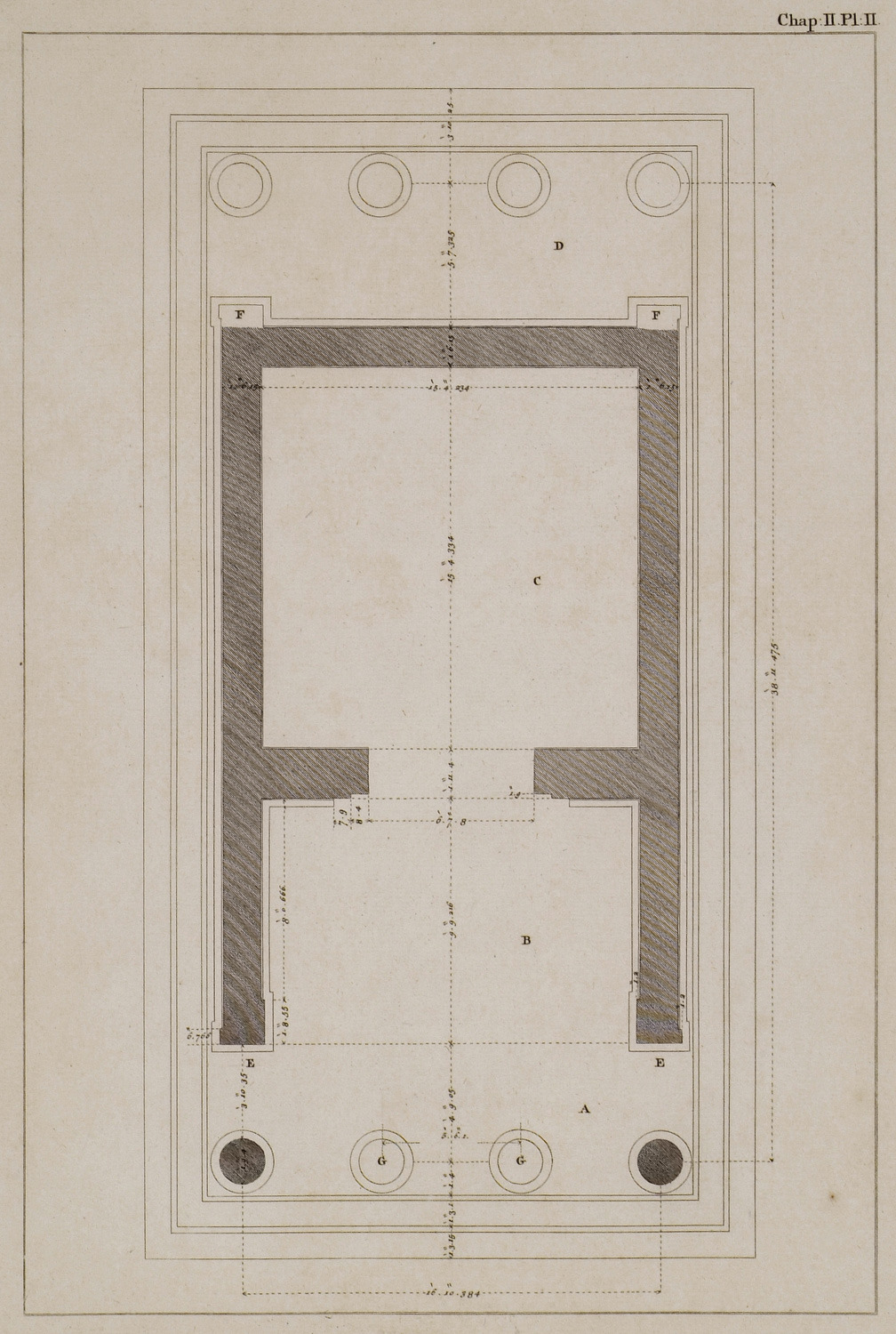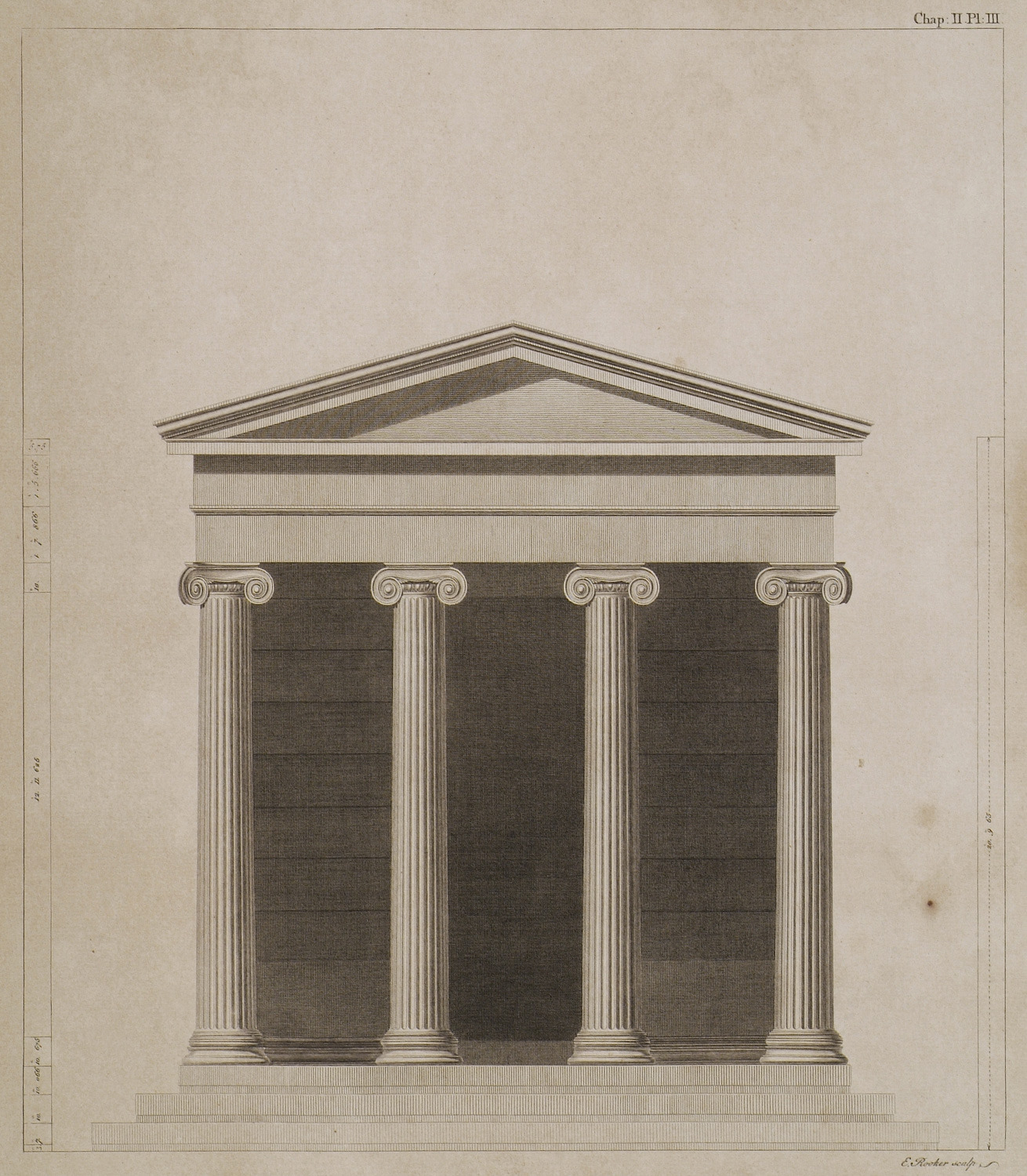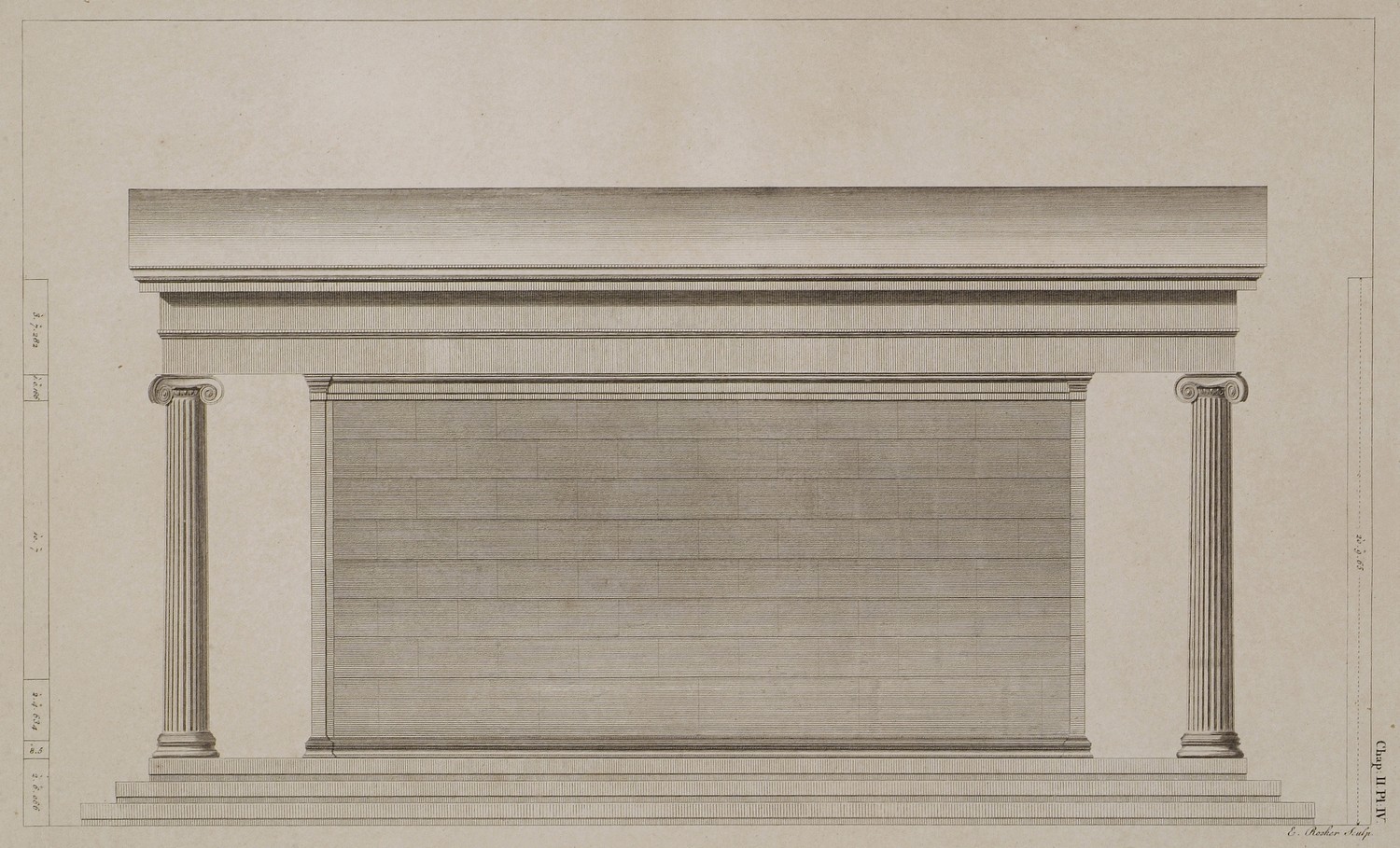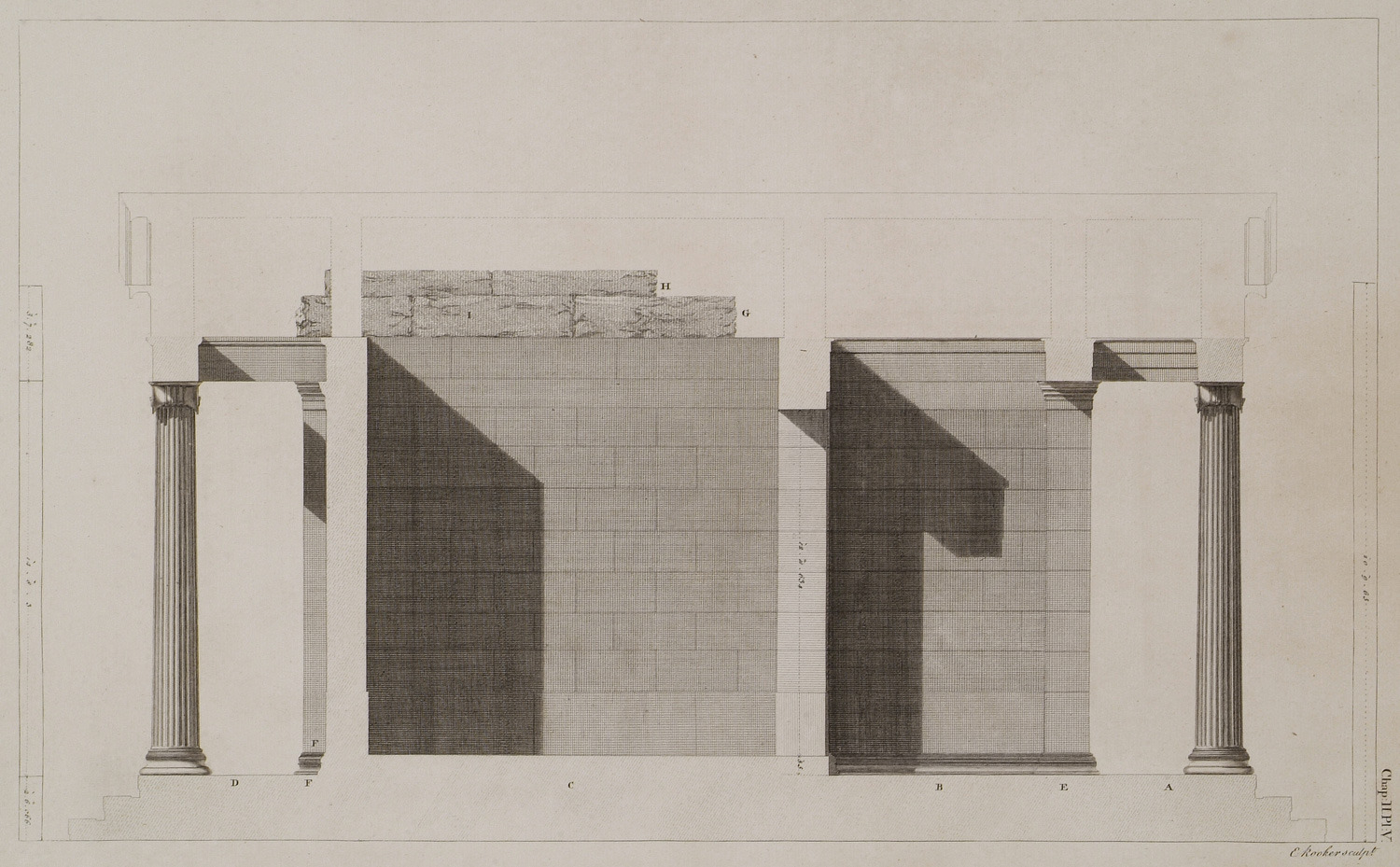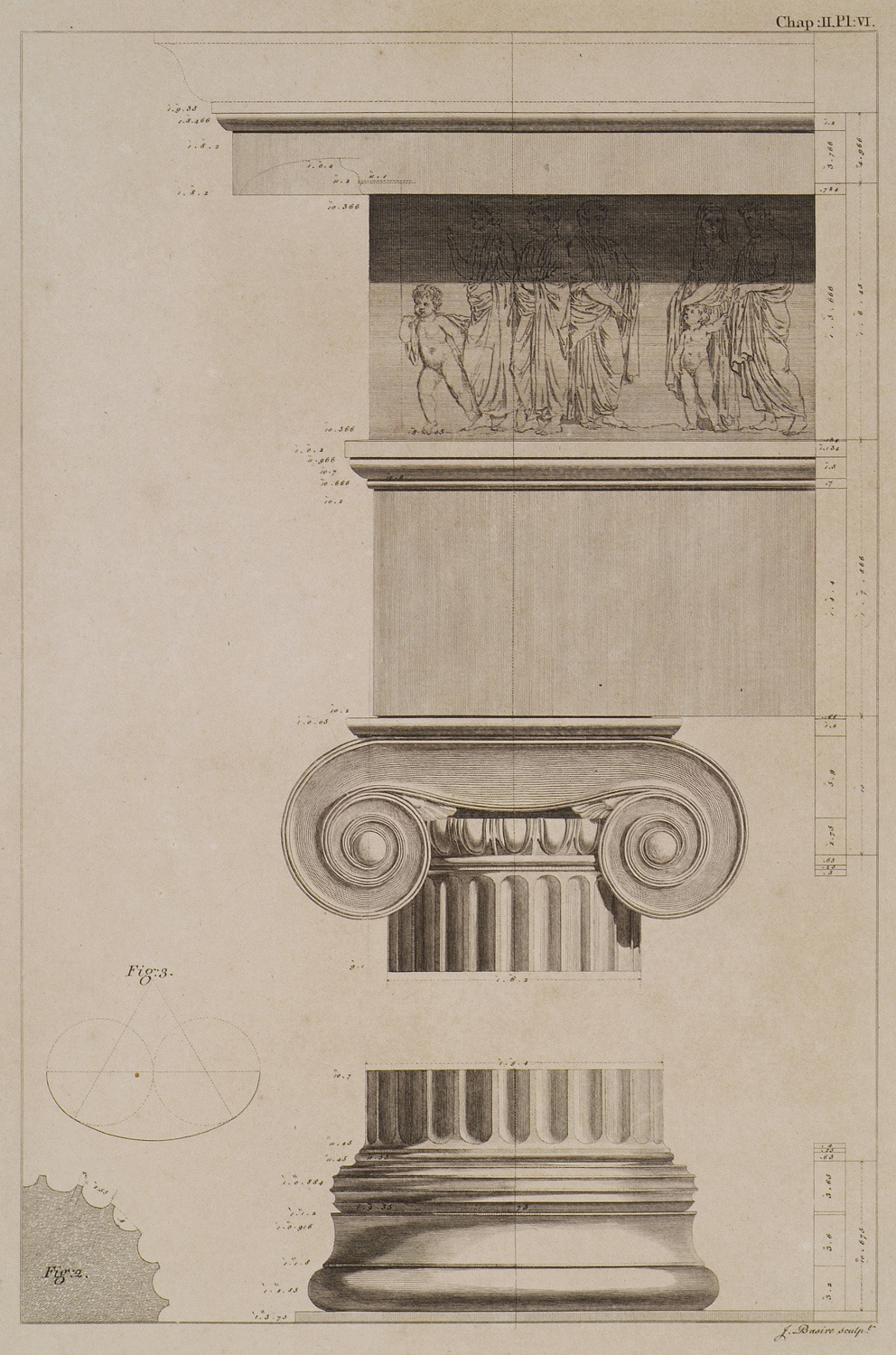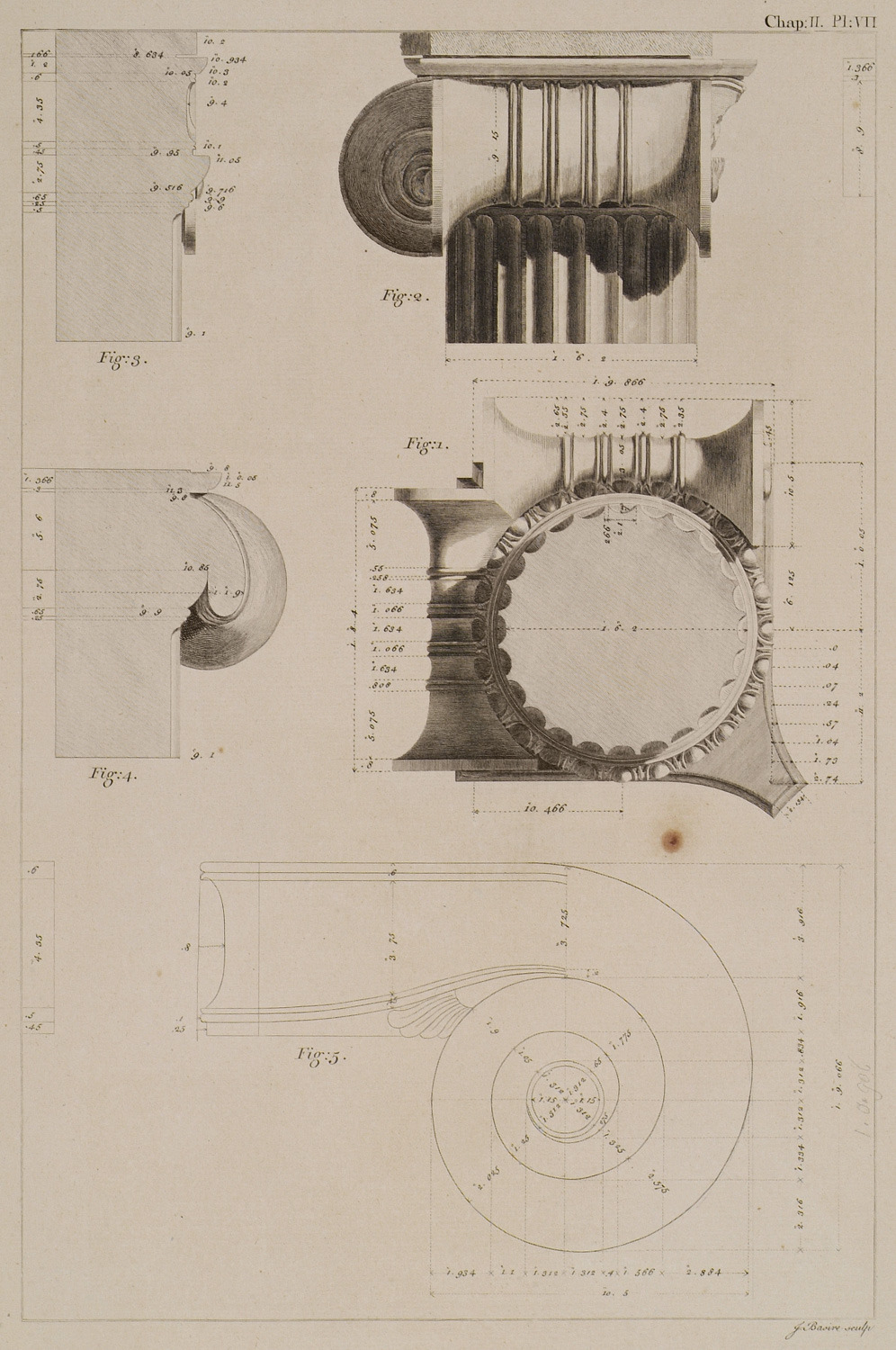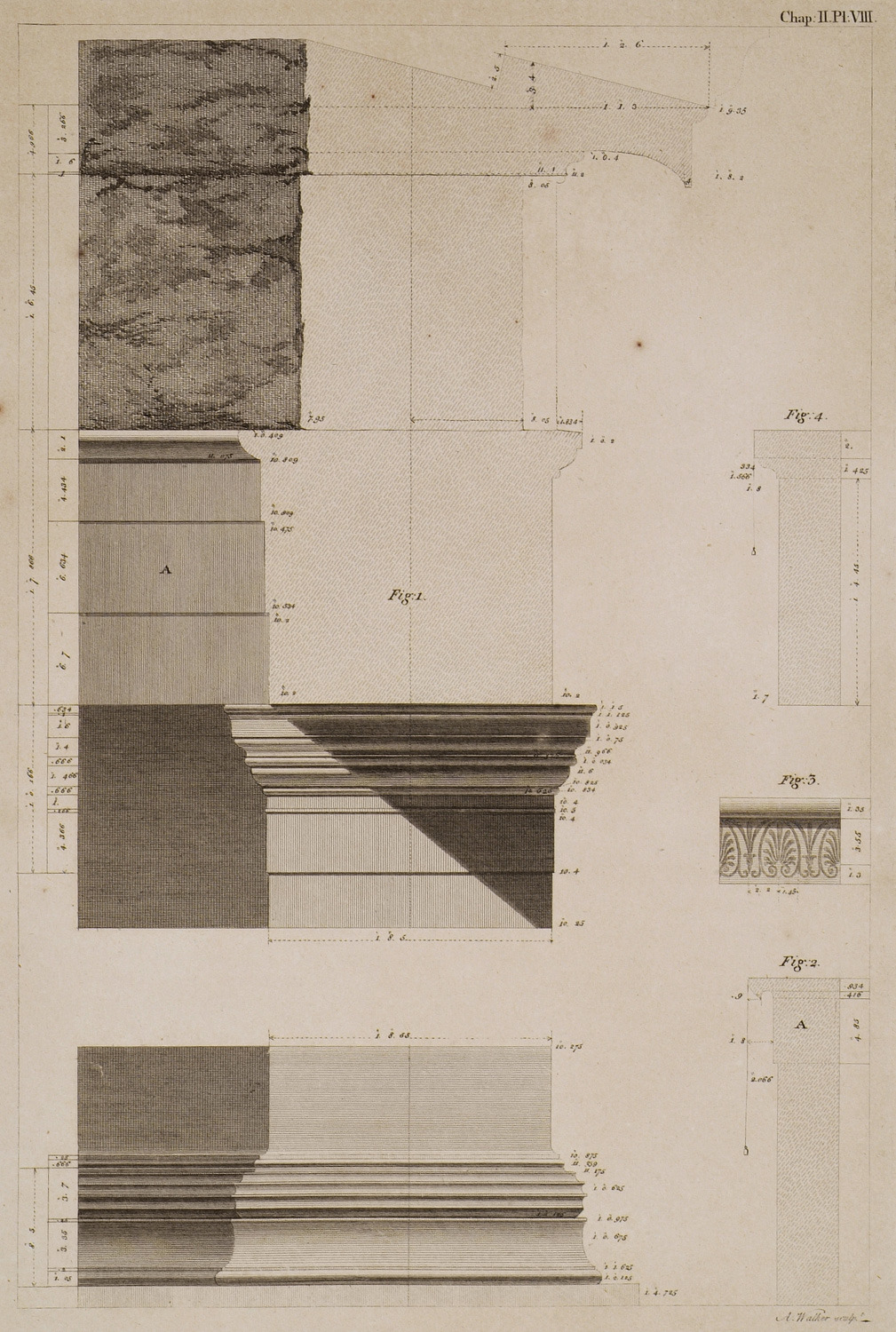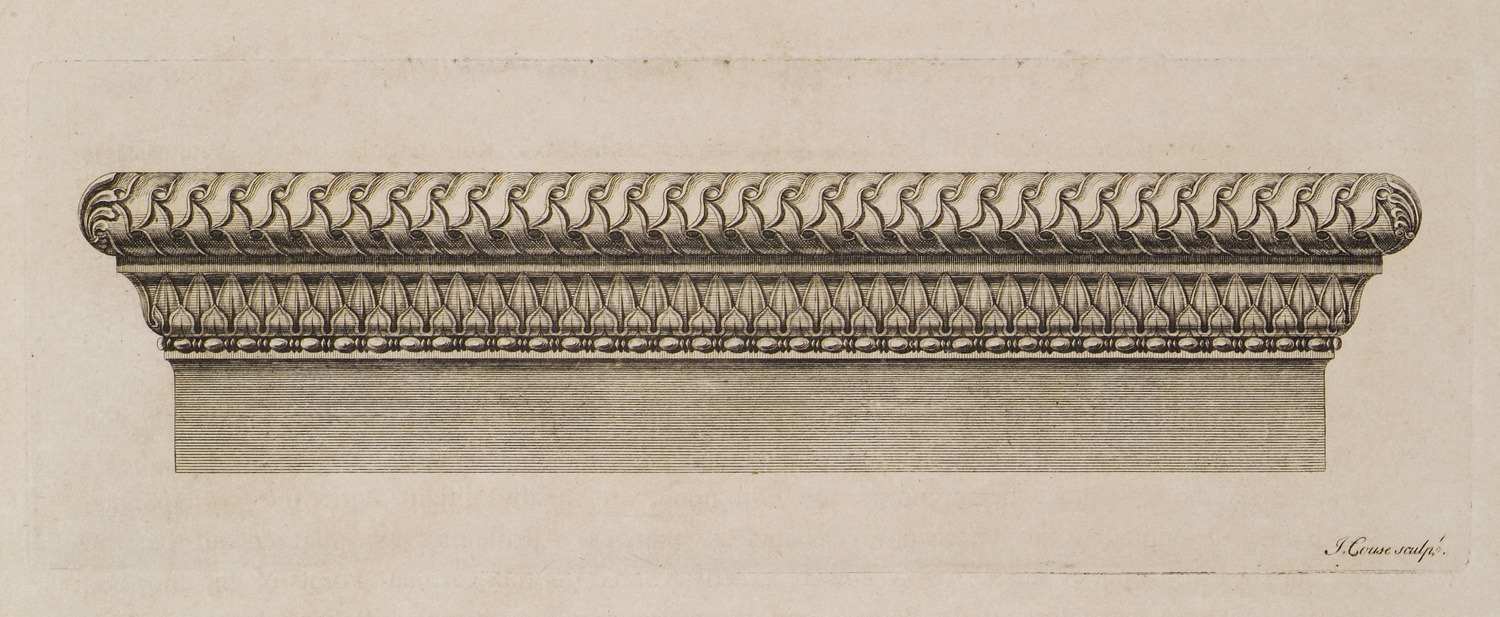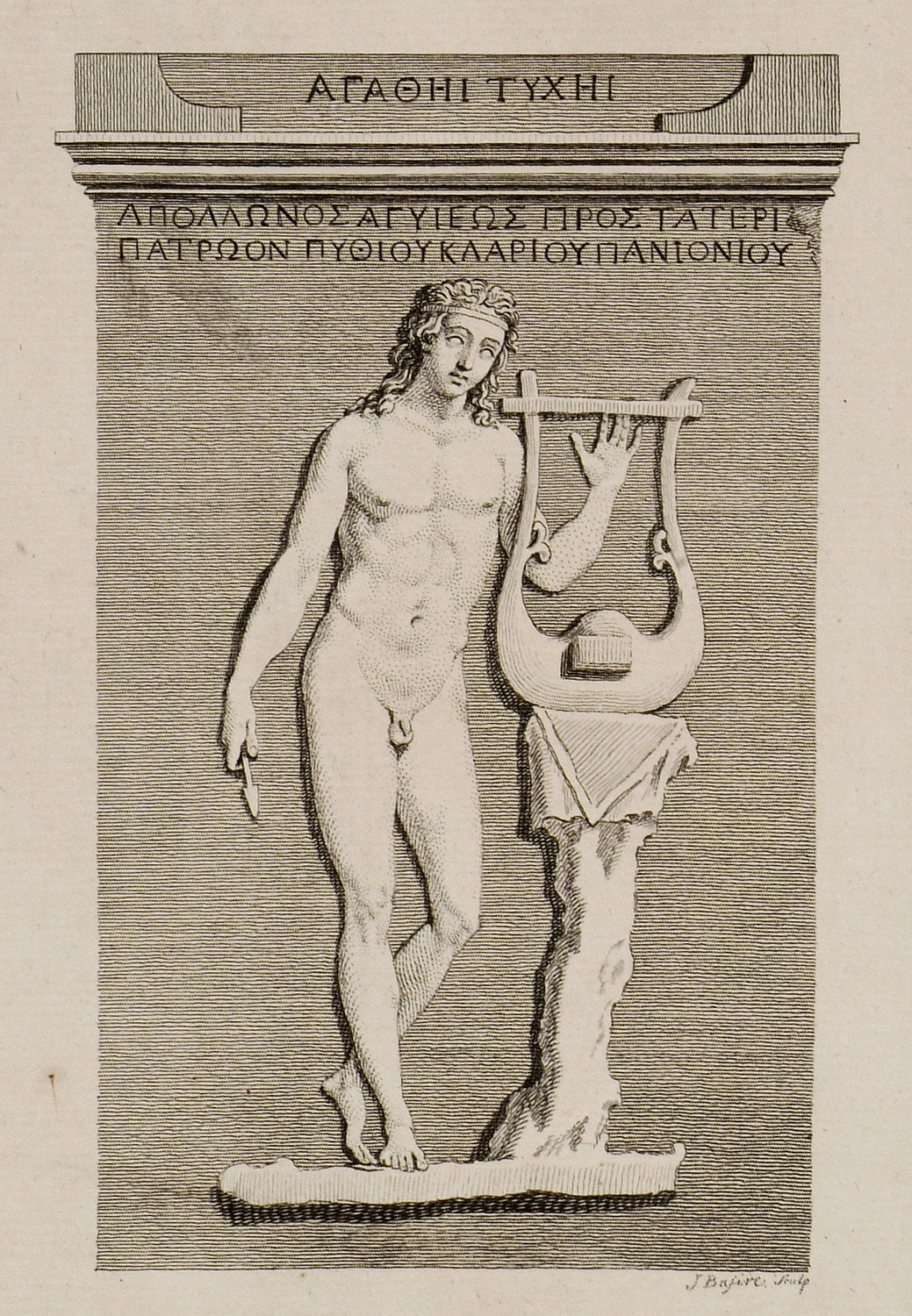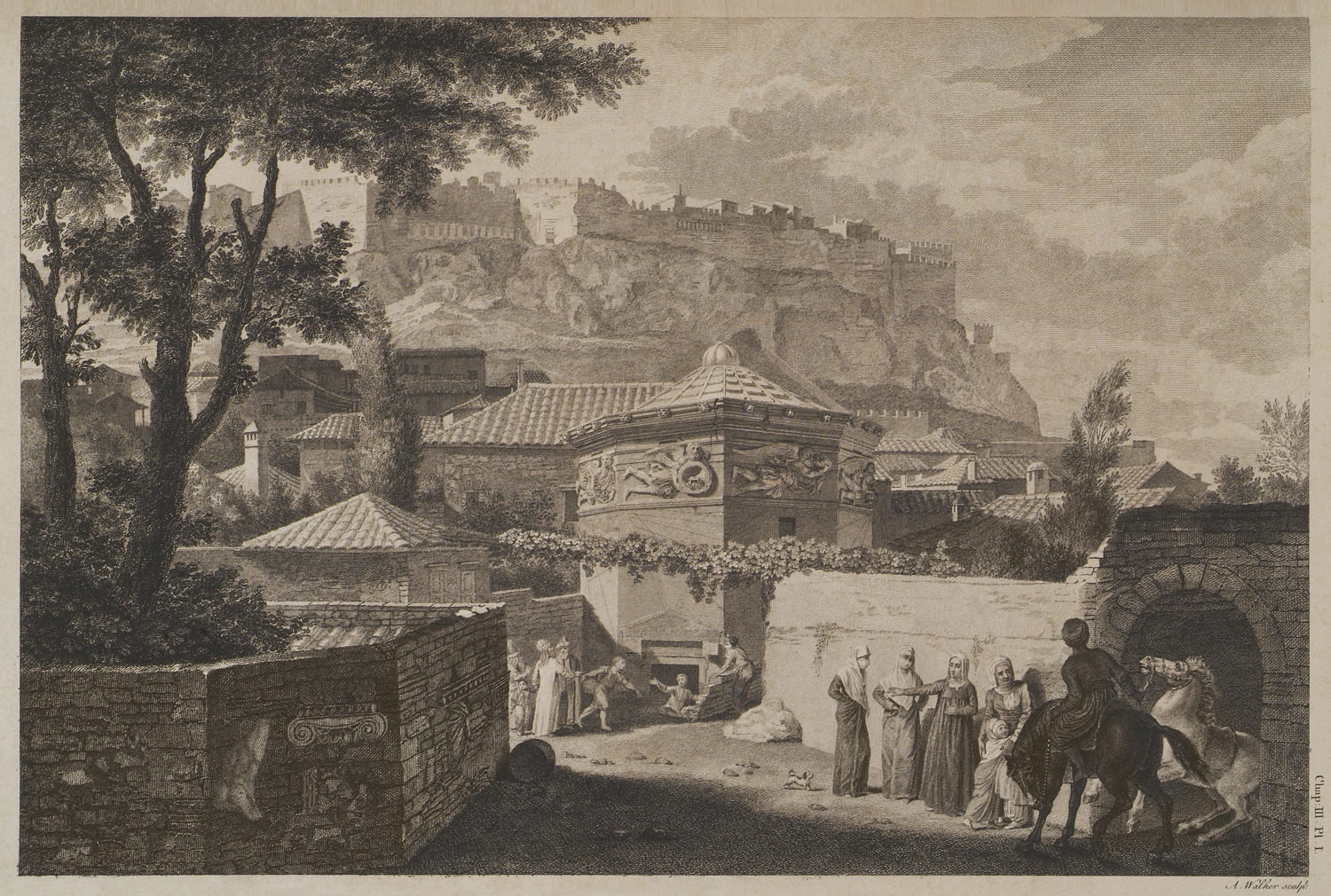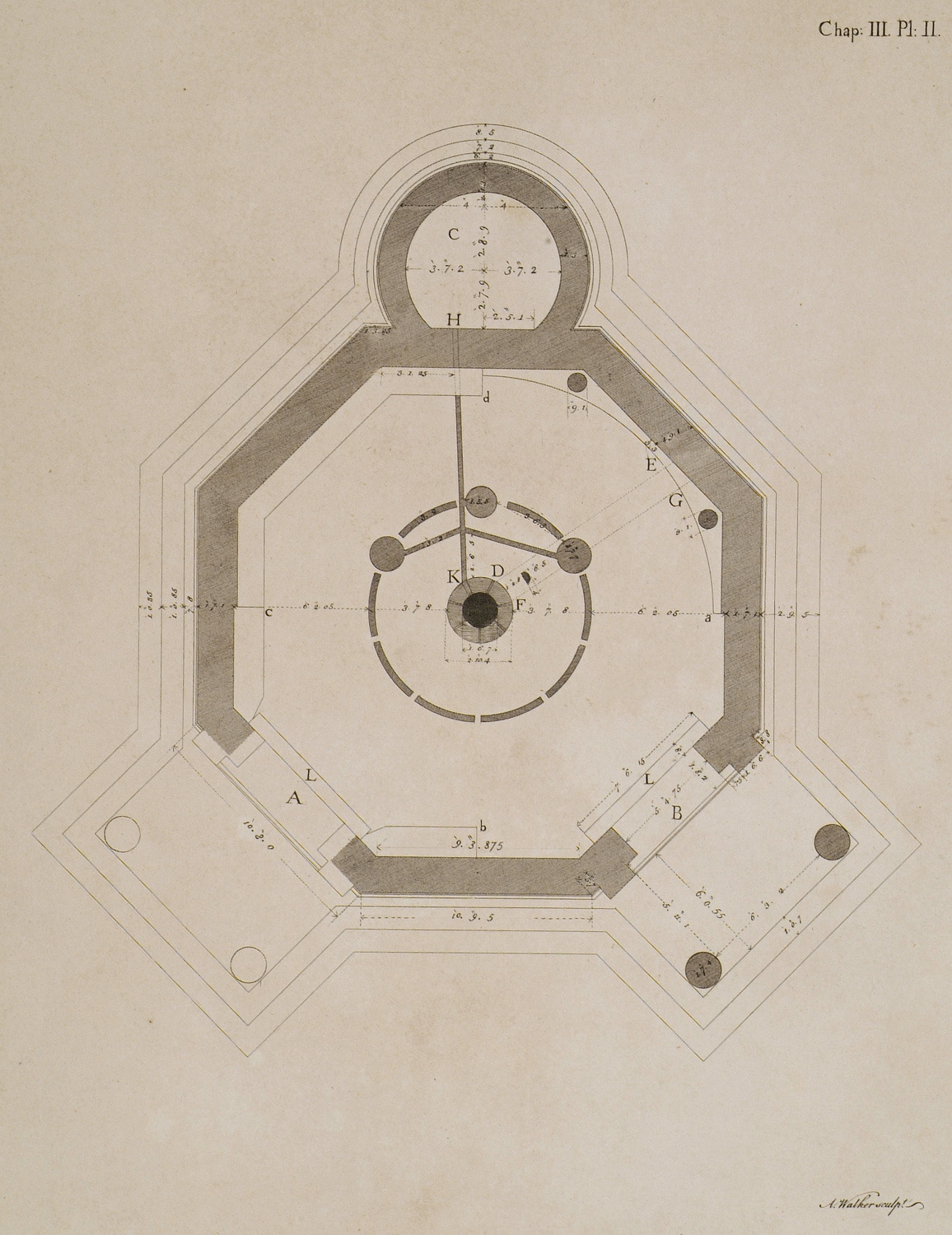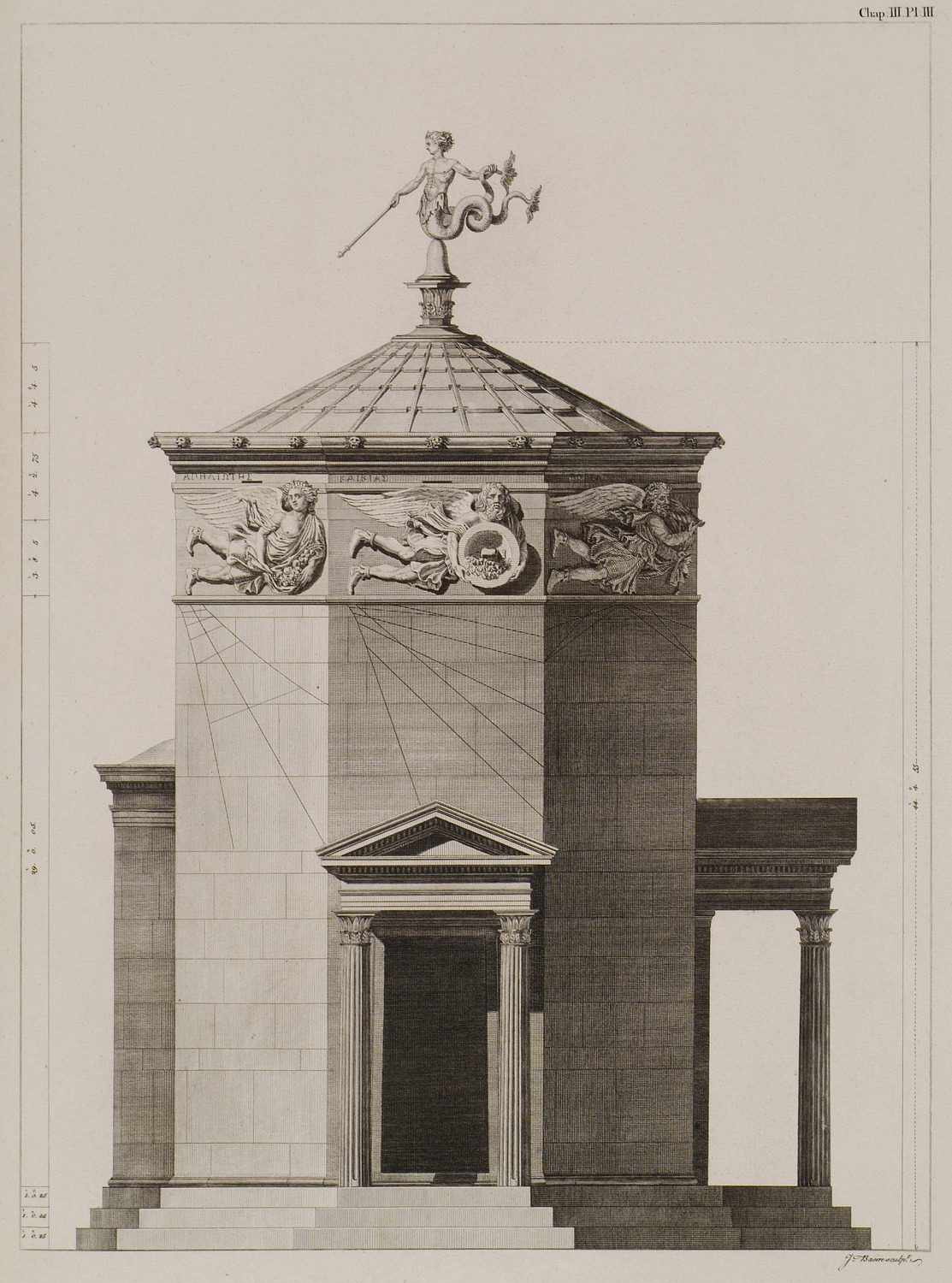Attica (1797 Subjects)
Houses in 19th-century Athens, based on a drawing by C.R.Cockerell.
The tomb of Themistocles in Drapetsona.
Megara by moonlight.
Ancient coins of Athens. Coins of the King George III.
Composition of ancient inscriptions.
Inscription on throne ordered by Sagaris, treasure keeper of Achaia, in the memory of the pedagogue Turanius Maximus. The throne was found at the Church of Hagios Spyridonas in Piraeus.
General view of Athens from Hadrian's Aqueduct (Dexameni) in Athens.
Triglyph and metopes.
Votive stele and coins of the Roman era.
Street in Athens. In the background the Gate of Athena Archegetis (mod. Pazaroporta).
Gate of Athena Archegetis (mod. Pazaroporta): 1. Plan of the portico. 2. Profile of the Capital of the Columns of this Portico.
Front elevation of the Gate of Athena Archegetis (mod. Pazaroporta).
Lateral elevation of the Gate of Athena Archegetis (mod. Pazaroporta).
The capital and the entablature of the Gate of Athena Archegetis (mod. Pazaroporta).
Gate of Athena Archegetis (mod. Pazaroporta): 1. The capital of the Antae, with a section of the entablature. 2. A section of the capital of the Antae. 3. A section of the Cornice over the Pediment.
Mosaic, most probably from a building somewhere in between the Temple of Hephaestus (Thiseion) and Dipylo.
Ionian capital from the Temple of Artemis Agrotera in Agrae (Panagia stin Petra) in Athens.
South view of the Temple of Artemis Agrotera in Agrae (Panagia stin Petra) in Athens. The figures represent the Vaiwode, or Turkish Governor of Athens, with some of its attendants on a hunting party.
Temple of Artemis Agrotera in Agrae (Panagia stin Petra), Athens: A plan of this Temple.
Temple of Artemis Agrotera in Agrae (Panagia stin Petra), Athens: The elevation of the Portico.
Temple of Artemis Agrotera in Agrae (Panagia stin Petra), Athens: The south side of the Temple.
Temple of Artemis Agrotera in Agrae (Panagia stin Petra), Athens: The section of the temple, lengthways.
Temple of Artemis Agrotera in Agrae (Panagia stin Petra), Athens: Fig. 1. The capital and base of the columns, together with the entablature. Fig. 2. A section of one quarter of the column, to shew the number and proportion of the flutings. Fig. 3. The manner of forming the Flutings.
Temple of Artemis Agrotera in Agrae (Panagia stin Petra), Athens: The plan, profile, and section of an angular capital belonging to this ionic temple.
Temple of Artemis Agrotera in Agrae (Panagia stin Petra), Athens: The capital and base of one of the antae; with the different architraves which are employed in this building. Fig. 1. A., The architrave within the portico. Fig. 2. The architrave to the Pronaos. Fig. 3. The Form of the ancient Ornament which is painted on the upper Fascia of the Architrave of the Pronaos. Fig. 4. The architrave to the Posticus.
Ormament of architectural feature.
Relief of Apollo Agyieus, bearing the inscription: ΑΓΑΘΗΙ ΤΥΧΗΙ. ΑΠΟΛΛΩΝΟΣ ΑΓΥΙΕΩΣ ΠΡΟΣΤΑΤΕΡΙ ΠΑΤΡΩΟΝ ΠΥΘΙΟΥ ΚΛΑΡΙΟΥ ΠΑΝΙΟΝΙΟΥ.
The Horologion of Andronikos Kyrristos (Tower of the Winds) in Athens, with the Acropolis in the background.
Seikh Mustafa, chief of the order of Whirling Dervishes, who used the monument as their tekije (dervish lodge), is standing at the entrance of the monument, leaning on a staff, with his back turned.
In the foreground, a woman from an affluent family is promenading with her daughters and maidservant.
Plan of the Tower of the Winds (Horologion of Andronikos Kyrristos) in Athens.
The elevation of the Tower of the Winds (Horologion of Andronikos Kyrristos) in Athens.


